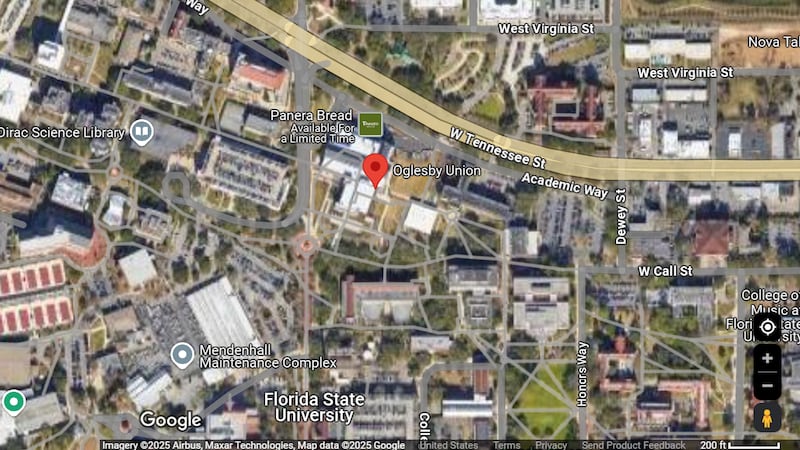PUNA, Big Island, Hawaii — Thousands of people have been evacuated from homes on Hawaii's Big Island as an eruption of the Kilauea volcano spewed toxic gas and lava in parts of lower Puna, destroying dozens of buildings.
Here are the latest developments on the eruption of the Kilauea volcano:
TRENDING NOW:
- Viral post shows veteran sitting in rain outside Pa. Walmart
- 'Game of Thrones' actor Hafthor Bjornsson wins World's Strongest Man title
- Inmate suing Corrections Department to end Timberland boots ban
- VIDEO: 2018 Pittsburgh Marathon: Teferi wins men's division; Devore takes women's division
Two new fissures opened on Hawaii's Big Island over the weekend, spewing lava and fumes and forcing more residents to evacuate https://t.co/QopkpVwtXU pic.twitter.com/Zv6lRXTPI9
— CNN (@CNN) May 14, 2018
Update 2:58 p.m. EDT May 14: Officials on Monday warned residents of Lanipuna Gardens to be on the alert for gas emissions and "active volcanic eruption" after an 18th fissure opened on the Big Island one day earlier.
>> Photos: Hawaii volcano erupts
Officials with the U.S. Geological Survey released aerial footage of the ongoing eruption, showing lava and ash flying 500 feet into the air.
#Kilauea,18 fissures now, but 17 is the most voluminous...and #LavaFountain still #erupting. Video of May 13 4:30PM heli flight - steam jets throwing #SpatterBombs up to 500 ft. East #aa #lavaflow cascading into steaming pit. #Hawaii https://t.co/4xgDUM0aeZ pic.twitter.com/JJU1Y9kI5V
— USGS Volcanoes🌋 (@USGSVolcanoes) May 14, 2018
Update 11:05 a.m. EDT May 14: Residents of lower Puna have been warned to be prepared for evacuations with little to no advanced notice after an 18th fissure opened Sunday.
Officials with the Hawaii County Civil Defense Agency said it opened on private property between the 16th and 17th fissures.
Eruptions were ongoing Sunday night, officials with the U.S. Geological Survey said, sending lava and rock hundreds of feet into the air.
"This eruption is still evolving and additional outbreaks of lava are possible," USGS officials said in a status report from the Hawaiian Volcano Obseratory. "Activity can change rapidly."
Officials noted that steam and volcanic gas was rising Sunday from the Overlook crater in Halemaumau, inside Kilauea's caldera.
"This eruption is still evolving and additional outbreaks of lava are possible," USGS officials said. "Activity can change rapidly."
Update 7:16 a.m. EDT May 14: The Kilauea volcano has now spawned 18 fissures, the latest opening Sunday evening, Hawaii News Now reported early Monday.
The news "heightened fears about the possibility of a mass evacuation if the volcanic activity continues," the outlet reported.
The eruptions reportedly have destroyed 27 homes and 10 other buildings, and lava has damaged 50 utility poles and covered 117 acres.
Update: 3:45 a.m. EDT May 12: While no lava has flowed since Wednesday from the 15 fissures that cracked open in the Leilani Estates neighborhood, earthquakes, ground deformation and ongoing emissions of sulphur dioxide indicate more lava outbreaks are likely, according to the U.S. Geological Survey.
Scientists can’t say for sure where the lava outbreaks might occur, but they think the chances are high that lava will flow again either from the existing fissures or erupt from the ground near openings.
They’re warning that anything downslope from these fissures is at risk of being destroyed from lava.
Update May 11: President Donald Trump issued a disaster declaration for Hawaii on Friday a day after a request from the state's Gov. David Ige.
The declaration means federal funds will now be available for help in repairing roads, public parks, schools and water pipes damaged or destroyed by the eruption of Kilauea last week and the ongoing earthquakes related to the eruption.
The federal assistance also covers any security that’s needed, geologists and any type of military help that might be needed.
"I'm grateful for the quick approval of my request for a Presidential Disaster Declaration. This opens the door to federal assistance and demonstrates a solid partnership with the federal government as we work to keep Hawai'i residents safe and support recovery efforts on Hawai'i Island," Ige said in a press release.
I’m grateful for the quick approval of my request for a Presidential Disaster Declaration.This opens the door to federal assistance and demonstrates a solid partnership with the federal government as we work to keep HI residents safe and support recovery efforts on Hawai‘i Island
— Governor David Ige (@GovHawaii) May 12, 2018
Dozens of homes have been destroyed and more than 1,700 people have been evacuated after Kilauea erupted on May 3, sending sulfuric acid, molten rocks and lava into neighborhoods on Hawaii’s Big Island.
A series of earthquakes followed the initial eruption, including a massive 6.9 magnitude quake that rattled the Big Island on May 4 and caused panic among residents already scared by the volcanic eruption.
Hawaii Volcanoes National Park has been closed down until further notice due to the risk of "explosive eruptions" at Kilauea's summit, officials announced on Wednesday.
Update 9:10 a.m. EDT May 10: A new fissure opened Wednesday near the entrance to the Lanipuna Subdivision, officials with Hawaii County Civil Defense Agency said, bringing the total number of fissures to 15.
Authorities said more than 116 acres have been covered by lava since last week, when the eruptions began. Thirty-six structures, including at least 26 homes, have been destroyed.
Officials announced Wednesday that Hawaii Volcanoes National Park will be closed Friday due to safety concerns amid the possibility of an explosion at Kilauea’s summit.
Authorities with the U.S. Geological Survey said Wednesday that the risk of “explosive eruptions” will rise in the coming weeks as lava flows from the fissures that have opened in the area, lowering the lava lake.
“If the lava column drops to the level of groundwater beneath Kīlauea Caldera, (the) influx of water into the conduit could cause steam-driven explosions,” USGS officials said. “Debris expelled during such explosions could impact the area surrounding Halemaʻumaʻu and the Kīlauea summit. At this time, we cannot say with certainty that explosive activity will occur, how large the explosions could be, or how long such explosive activity could continue.”
Update 9:30 a.m. EDT May 9: A total of 14 fissures have opened in Hawaii's Leilani Estates neighborhood, spreading lava over 104 acres and destroying 36 structures, officials said Tuesday.
Update 4:45 p.m. EDT May 8:
A total of 12 fissures have now opened in the Leilani Estates neighborhood on Hawaii's Big Island, according to the Hawaiian Volcano Observatory. The lava is no longer flowing from the fissures, but Kilauea volcano is still releasing hazardous fumes, the observatory reported.
The lava has covered more than 100 acres so far and has destroyed 35 structures, including more than 25 homes.
"This is not over," USGS geologist Janet Babb told Hawaii News Now.
"There's still magma within the rift zone. In the foreseeable future, this eruption is likely to continue," she said.
Hawaii volcano latest as Kilauea roars back in full force:
— ABC News (@ABC) May 7, 2018
- 31 structures destroyed.
- 10 fissures.
- No injuries reported so far.@KaynaWhitworth has more. https://t.co/VS9lowI70o pic.twitter.com/EtH22zU8n4
Update 8:30 p.m. EDT May 7: Two more fissures opened in the Leilani Estates neighborhood late Monday, according to Hawaii News Now, which cited the U.S. Geological Survey, bringing the number of fissures in the community to 10.
The USGS expects the Kilauea eruption to continue because seismic activity is still ongoing in the area. The agency is warning that aftershocks from Friday's 6.9 magnitude earthquake are also continuing and that large aftershocks are possible.
#BREAKING The 2 new fissures “appear to be opening up on Malama Street near Alapai Street” #Kilauea
— Allyson Blair (@AllysonBlairTV) May 8, 2018
Update 2:17 p.m. EDT May 7: Officials with the Hawaii County Civil Defense Agency said lava had destroyed 35 homes in the Leilani Estates Subdivision by Monday morning as a total of 10 fissures opened in the area.
"The residents of Leilani Estates are going through a very difficult time," officials said in an update around 6 a.m. local time. "We ask for your understanding. We ask for your help."
Update 12:35 a.m. EDT May 7: According to The Associated Press, at least 26 homes have been destroyed by the Kilauea volcano, officials said Sunday.
"Lava has spread around 387,500 square feet surrounding the most active fissure, though the rate of movement is slow," the AP reported.
Meanwhile, Hawaii News Now reported Sunday night that "an 11th fissure has just opened in Leilani Estates" and that authorities said people in the area should leave immediately.
#BREAKING - HNN: An 11th fissure has just opened in Leilani Estates -- County officials are urging resident who may be in the neighborhood to leave the area immediately. #Kilauea
— Allyson Blair (@AllysonBlairTV) May 7, 2018
Update 3:20 p.m. EDT May 5: There are social media reports of a new eruption taking place in Leilani Estates Saturday morning, Hawaii News Now reports.
Update 7:05 p.m. EDT May 4: A series of earthquakes shook parts of Hawaii Friday as the Kilauea volcano continued erupting. The U.S. Geological Survey recorded a magnitude 6.9 quake just after 6:30 p.m. EDT centered 11 miles from Ainaloa, Hawaii, scaring already frightened residents.
#BREAKING: Another large earthquake, this one a 6.0-magnitude, has been reported near Hawaii Island. https://t.co/LHTCs39mdq #HNN pic.twitter.com/CL8cLLgaxh
— Hawaii News Now (@HawaiiNewsNow) May 4, 2018
#BREAKING #LeilaniEstatesEruption: First look at the two homes that caught fire after a third eruption broke out at Kaupili Street and Leilani Avenue in the #LeilaniEstates evacuation zone. More details as they develop on @hawaiinewsnow #HInews #HawaiiNews https://t.co/pRQf3zGTue pic.twitter.com/V212PIOUlj
— Mileka Lincoln (@MilekaLincoln) May 4, 2018
Authorities warned residents to evacuate the Leilani Estates and Lanipuna Gardens subdivisions. Hawaii County Fire Department officials said they detected "extremely high levels" of sulfur dioxide gas in the evacuation area.
Original report: "Shortly before 5 p.m., lava was confirmed at the surface in the eastern end of the subdivision," Observatory officials said.
The Hawaii Fire Department reported extremely high levels of dangerous sulfur dioxide gas in the evacuation area, the Star-Advertiser reported.
The Hawaii County Civil Defense ordered residents in Leilani Estates and Lanipuna Gardens to evacuate to a local community center, CNN reported.
>> Photos: Hawaii volcano erupts
The evacuation comes after hundreds of earthquakes hit the eastern side of the Big Island, CNN reported.
Kilauea is one of the world's most active volcanoes, and since Monday, hundreds of earthquakes have been recorded in the area, CNN reported. They are the result of a collapse of a crater floor of Puʻu ʻŌʻō, a volcanic cone in the eastern rift zone.
Video captured lava shooting into the sky from a crack in a road. Aerial drone footage showed a line of lava making its way through a forest, CNN reported.
Lower Puna resident Ikaika Marzo told the Star Advertiser he saw lava shooting up to 150 feet in the air.
"It sounds like a jet engine. It's going hard," Marzo told the newspaper.
Hawaii Volcano Observatory scientists said that a 492-foot-long fissure erupted with lava bubble bursts for about two hours. The lava stopped after traveling a few yards from the fissure, the scientists said.
Cox Media Group







